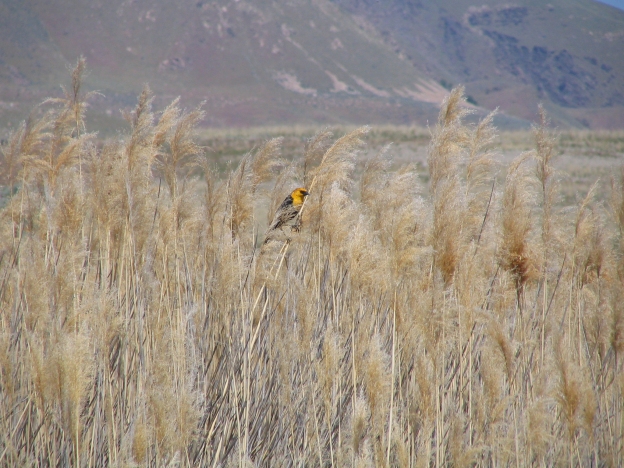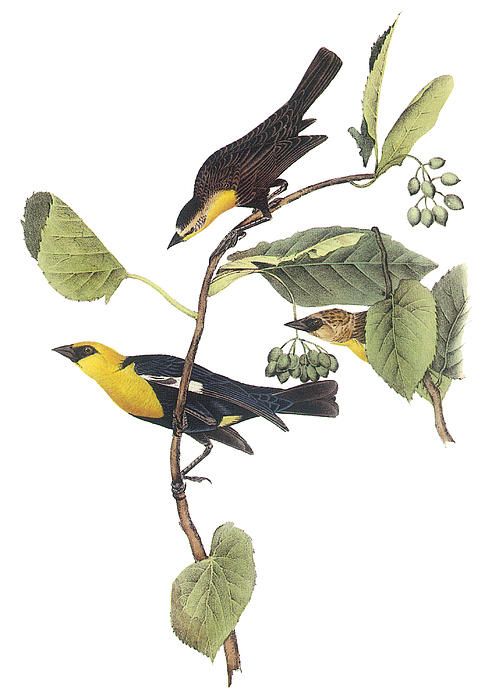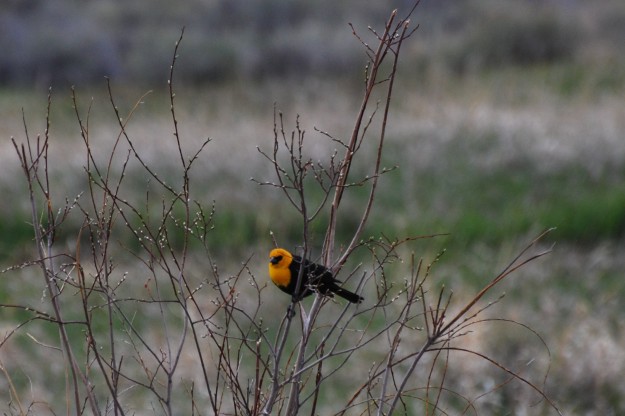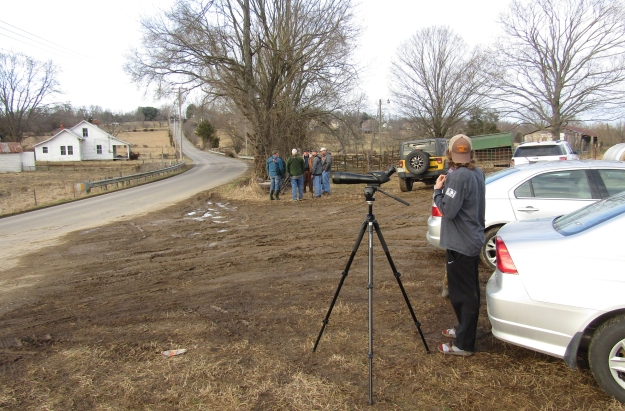
Photo by Shauna Fletcher/Pixabay • A male red-winged blackbird produces his “kon-ke-ree”song and flashes his red wing patches to claim territory and attract mates.
I’ve long come to associate red-winged blackbirds with early spring. Most years, I get a friendly reminder in February that spring’s on its way when a vanguard of of red-winged blackbirds return in impressive numbers every March.
This year, my first returning male red-winged blackbird arrived on the evening of March 3. The early spring arrival perched atop one of the tall cypresses by the fish pond and sang is heart out. He’s been singing every day since his arrival, but I’ve not yet noticed any female red-winged blackbirds. It’s been my experience that the females lag a week or so behind the males in returning to their familiar territory.
The blackbirds arriving in spring behave much differently than the quiet, furtive ones that often make brief visits to feeders during late winter snowstorms.
The showy and loud red-winged blackbird male that’s once again taken up residence at my fish pond and adjacent stands of cattails has made himself right at home
“The kon-ke-ree song of the male red-winged blackbird is a sure indication that spring is on the way,” according to a profile located at the Tennessee Watchable Wildlife website.
At this time of year, the male red-winged blackbirds seek elevated perches to display and vocalize. Their loud antics are not designed solely to attract mates. Male red-winged blackbirds also sing to warn rival males from intruding into their territories.
The male red-winged blackbirds is a very aptly named bird. Glossy black males sport red wing patches that are often trimmed with a narrow band of yellow feathers. By contrast, female red-winged blackbirds are mostly brown birds that could easily be mistaken for large sparrows. Both sexes have sharply pointed bills.
Red-winged blackbirds are fond of wetlands. Any marsh or even a damp field or flooded pasture is likely to attract a few resident red-winged blackbirds. Females choose nesting locations in cattails or other marsh vegetation. She usually lays three or four eggs. Although she does receive some help from the male, most of the responsibility for raising the young is left to her.
There is a reason that male red-winged blackbirds are not always quite as engaged in feeding and tending their young. Male red-winged blackbirds are often polygynous, which means that males will often court multiple mates. His time is often occupied defending females and their respective nests from the advances of other male red-winged blackbirds.
Other relatives of the red-winged blackbird in the United States include the tricolored blackbird found along the Pacific Coast and the yellow-headed blackbird resident in wetlands west of the Great Lakes. Rusty blackbird, common grackle and brown-headed cowbird are other species of blackbirds found in Tennessee, Virginia and North Carolina.
The common grackles have also returned. I’ve been noticing grackles on lawns through downtown Erwin on some of my recent walks. Like American robins, grackles form loose flocks that spread out and forage on lawns and in gardens.
The grackle, as well as the red-winged blackbird, belong to the family known as Icteridae, also known as New World blackbirds. This rather large family of birds consists of such groups as blackbirds, New World orioles, bobolink, meadowlarks, grackles, cowbirds, oropendolas and caciques.
Old World blackbirds are actually thrushes while Old World orioles are not closely related to the orioles of the New World.
The human clearance of land for farming and residences has helped the common grackle spread far and wide. Grackles can become threats to crops and large flocks of these birds can certainly overwhelm the average backyard feeder. The grackle is an opportunistic bird and can learn to adjust its behavior to take advantage of a source of easy food. For example, grackles have learned to frequent outdoor areas where humans dine and inevitably drop food. Grackles will also eat almost anything they can swallow, including insects, small fish, amphibians, small rodents and the eggs of other birds, as well as berries, seeds and grains.
Grackles only make brief visits to my home during migration, but the red-winged blackbirds that arrive in early spring will stick around to nest, usually not departing until late summer. To reduce competition with other songbirds, consider scattering seed on the ground for grackles, which actually prefer foraging at ground level. Providing for them in this way may spare the users of platform and hanging feeders, which can include such smaller birds as chickadees, wrens and sparrows.
The larger the songbird, the longer lifespan they usually enjoy. Still, the longevity record for a wild grackle strikes me as quite exceptional. According to the website All About Birds, the oldest recorded common grackle was a male that lived to be at least 23 years old. He might have lived longer, but he was killed by a raptor in Minnesota.
Other birds will be returning this month, so keep an eye out for them. Some of the species I expect in March include brown thrasher and blue-gray gnatcatcher.
To share a sighting, ask a question or make a comment, email me at ahoodedwarbler@aol.com.
































